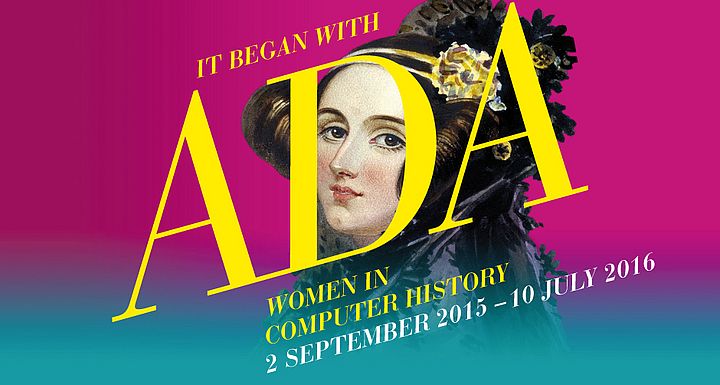10.08.2015
IT began with Ada. Women in computer history
Special exhibition at Heinz Nixdorf MuseumsForum100 years before the invention of the computer, the daughter of a famous English poet already wrote notes containing what is now regarded as the first program in computer history. Ada Lovelace was born in London 200 years ago – on 10 December 1815. Her life and work are the focus of the exhibition “IT began with Ada. Women in computer history”, which is running from 2 September 2015 to 10 July 2016 at Heinz Nixdorf MuseumsForum (HNF) in Paderborn, Germany.
The exhibition clearly shows how Ada Lovelace, assisted by Charles Babbage, developed a program for his never-built mechanical Analytical Engine, which made her an icon in information technology. A copy of a painting of Ada Lovelace can be seen at HNF; the original hangs at 10 Downing Street.
The exhibition is not confined to Ada Lovelace though. It also presents other female pioneers who have played a major role in driving the development of information technology from the 1940s to now.
In exciting settings covering 700 square metres, visitors can experience the conditions under which Ada Lovelace and her female successors carried out their work. With her fight against conventions, her trailblazing thoughts on programming and her visionary ideas for a universal calculating machine, Ada Lovelace is now representative for many women who have not received the same level of recognition so far.
Ever since the first computers were built in the 1940s in Europe and the United States, women have been heavily involved in their development. One department in the exhibition deals with computers in the Second World War. In particular, it shows the work of women at Bletchley Park, who with great effort helped to crack the codes of Germany’s Enigma machine.
Another department is dedicated to three female software pioneers. Grace Hopper is undoubtedly the best known and most legendary woman in the early days of computers. She was not only the first woman to reach the rank of admiral in the US navy but also made a name for herself as the developer of the first compiler. Mary Allen Wilkes counts as the first female user of a home computer. A graphical user interface is a standard feature in modern computers, and Adele Goldberg made a major contribution to this at Xerox PARC.
Three more women stand for global and digital progress in recent decades. In 1978, Christiane Floyd was the first woman in Germany to be appointed as a computer science professor – at TU Berlin. In the mid-1980s, Nadia Magnenat-Thalmann was one of the first to develop “virtual people” for a computer-animated film. This was in the shape of Marilyn Monroe and Humphrey Bogart. The current generation is represented by Limor Fried, who is a graduate of MIT and, above all, is active in today’s maker and open-source scene. She received the Most Influential Women in Technology award in 2011.
The life stories are fitted into social and socio-historical backgrounds, so the exhibition gives a considerable insight into the image of women and changing values over the last century and a half.
Much of the content is put across to visitors at modern media stations, where they can try things out. For instance, there is hands-on experience of the first electronic computer and other technological developments, making the exhibition appeal to the whole family.
More information is available at: www.hnf.de/adalovelaceEN
Admission charges:
Adults 3 euros
Reduced price 1.50 euros
Family ticket 7 Euro
Groups of 10 or more 2.50 euros
Combined ticket with entrance to permanent exhibition:
Adults 8.50 euros
Reduced price 5 euros
Family ticket 15 euros
Groups of 10 or more 7 euros
Groups of 10 or more, reduced price 4 euros
Entrance is free for general and vocational schools, colleges and universities, and for groups of young people on national service, both military and civilian, providing the visit has been notified in advance (service@hnf.de).
